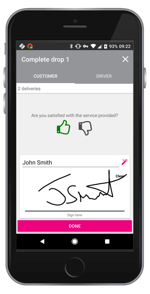
Tony Pey, Head of Product Marketing, examines how to really achieve digital transformation, by using IT to change your business’ culture and behavior.

You process sales transactions on your ERP system. You have a website. Your customers can trade with you over the internet. You market your business on various social media platforms.
Does this mean you can sit back and bask in the belief that you have ‘digitally transformed’ your business? Unfortunately not. The briefest of research into this complex subject and its definition will show you that ‘digital transformation’ is all about implementing technology to change the culture and behaviours within a business - rather than just using it to streamline existing processes.
A New Attitude to Digital
Today, we believe, there are two approaches to defining your IT strategy. The first is simply to extend the digital reach within your existing business model, most likely taking a similar route to the one that your original IT strategy took as you integrated functions across the organisation. You probably began with investing in automated accounting and ERP, and continued by embracing CRM, supply chain and other functions. Applying this strategy to further areas of the business such as HR, payroll etc are examples of how you might carry on applying new technology to existing processes and activities.
The second approach involves using IT to transform the business model itself. (This was the initial promise of first-generation digital strategies, but one that often reverted to simply streamlining processes as outlined above). Merchants are now seeing how they can take advantage of this shift in technology and behaviour to substantially increase efficiencies – and improve customer service – and are looking to their software providers to develop apps for use on iOS and Android devices to help facilitate the transformation. Their objective is to enable multi-operatives to undertake tasks in the showroom or warehouse that historically would have to be done back at a desk or behind the counter.
Apps That Add Value
This will be made possible by fast, easy access to content-rich functionality on a responsive device, which is integrated via a server link into the IT infrastructure of the business.  For example, our ePOD solution delivers a new autonomy to drivers by enabling them to access and manage a branch generated electronic manifest with signature capture. Deliveries or other issues are automatically confirmed in the core system to create a workflow at the branch, and PODs are instantly visible in the core system or on the web for customers. Apps like these are easy to set up so it is feasible to extend this type of technology to agency drivers.
For example, our ePOD solution delivers a new autonomy to drivers by enabling them to access and manage a branch generated electronic manifest with signature capture. Deliveries or other issues are automatically confirmed in the core system to create a workflow at the branch, and PODs are instantly visible in the core system or on the web for customers. Apps like these are easy to set up so it is feasible to extend this type of technology to agency drivers.
Read our blog on the Benefits of ePOD
eReceipt apps will enable the booking in of goods so they can be made ready for delivery to customers, but with any issues encountered being notified to the right team members so they can be resolved – enhancing customer service, yet minimising the time and effort involved.
Other apps that merchants are seeking include those that empower branch operatives to pick, undertake a stock-take, PPI and other functions. Again, all of these are designed to help focus that change in behaviour and on swift and efficient customer service.
We have all witnessed the assisted shopping apps with rich visual content that sales staff in showrooms or customers planning purchases are using. Rather than remaining behind a counter, sales staff can now approach customers in a showroom and use the app to discuss and build an order that is fed back to the core system. As well as the rich product content, these apps provide the customer with information drawn from the core system such as delivery times and, for merchants’ customers, their pricing and account status.
CRM apps developed for your field sales team will let them access customer account status, quotes and CRM detail as well as their own dashboards and KPIs. They will be able to enter visit reports to update the core system as well as creating and updating tasks and capturing orders – another tool to ensure that you will be meeting customers’ expectations of a personalised experience.
Adopting a Digital Strategy
Adopting a digital strategy means that you will be driving new behaviour among your teams and empowering them to work in ways that will enhance customer service as well as driving efficiencies throughout the branch. We are committed to helping you do this by developing technology that pushes out more data directly from the core system that operatives across your business can use proactively and in different ways.
We believe this is how we can help you to start your digital transformation process!



